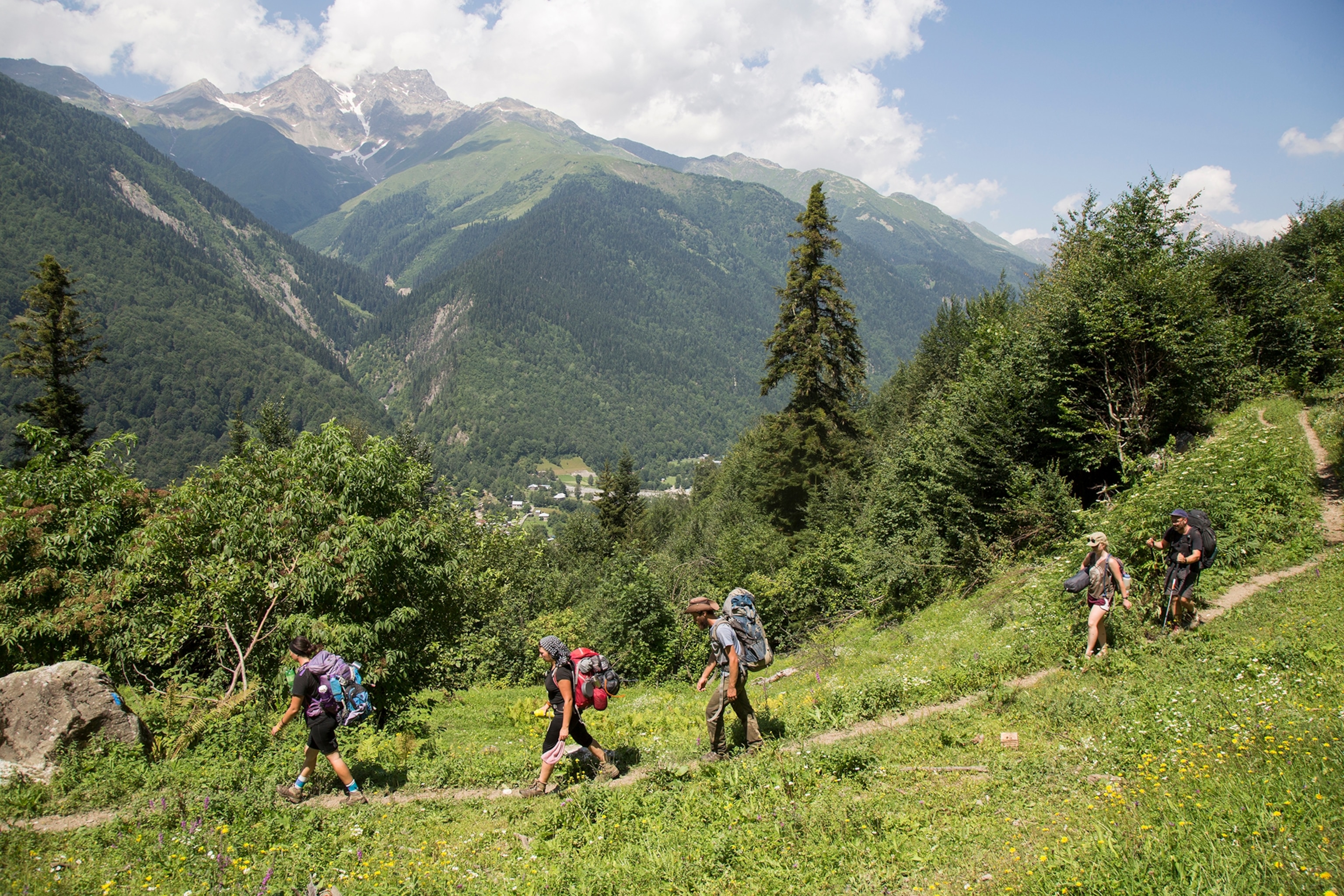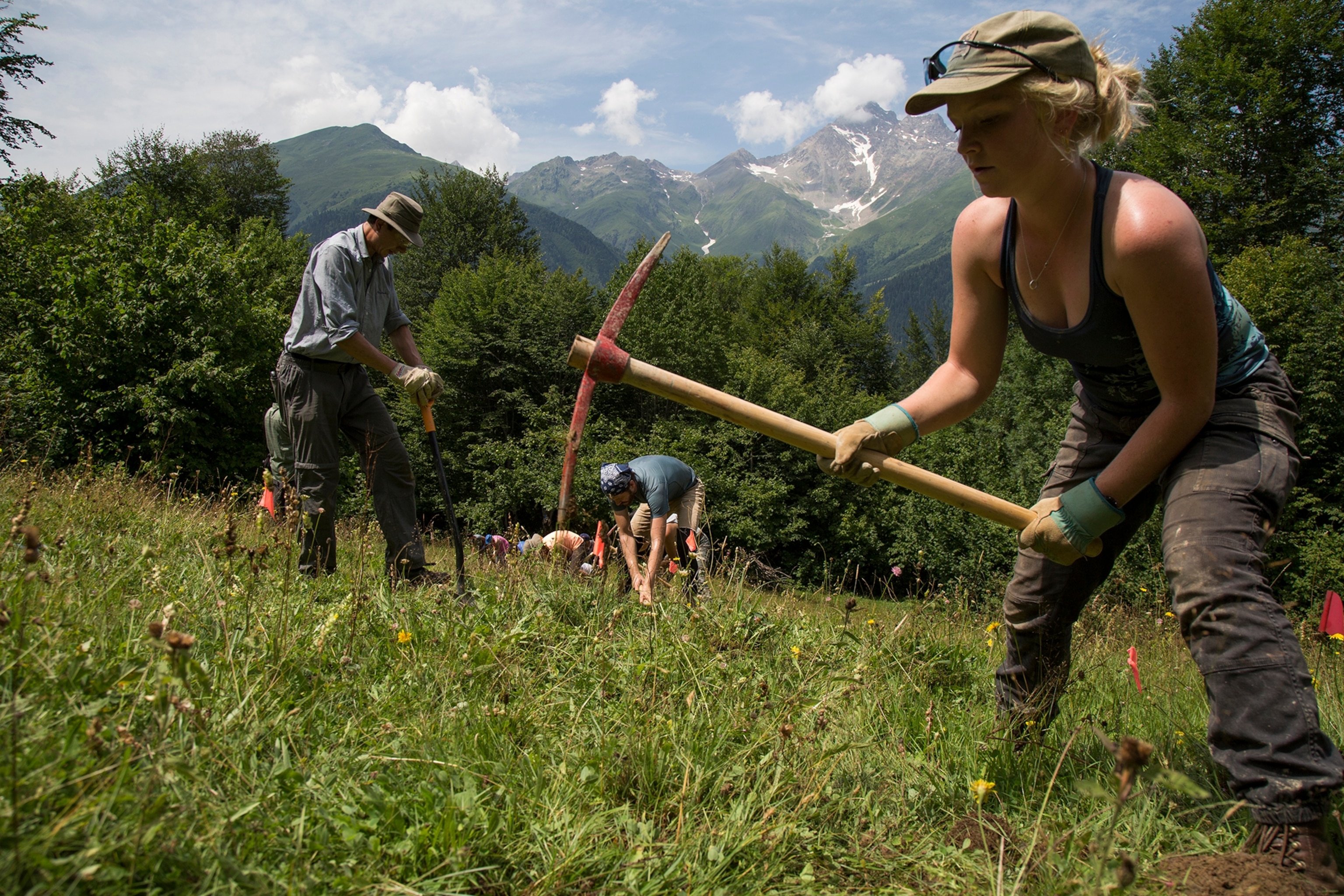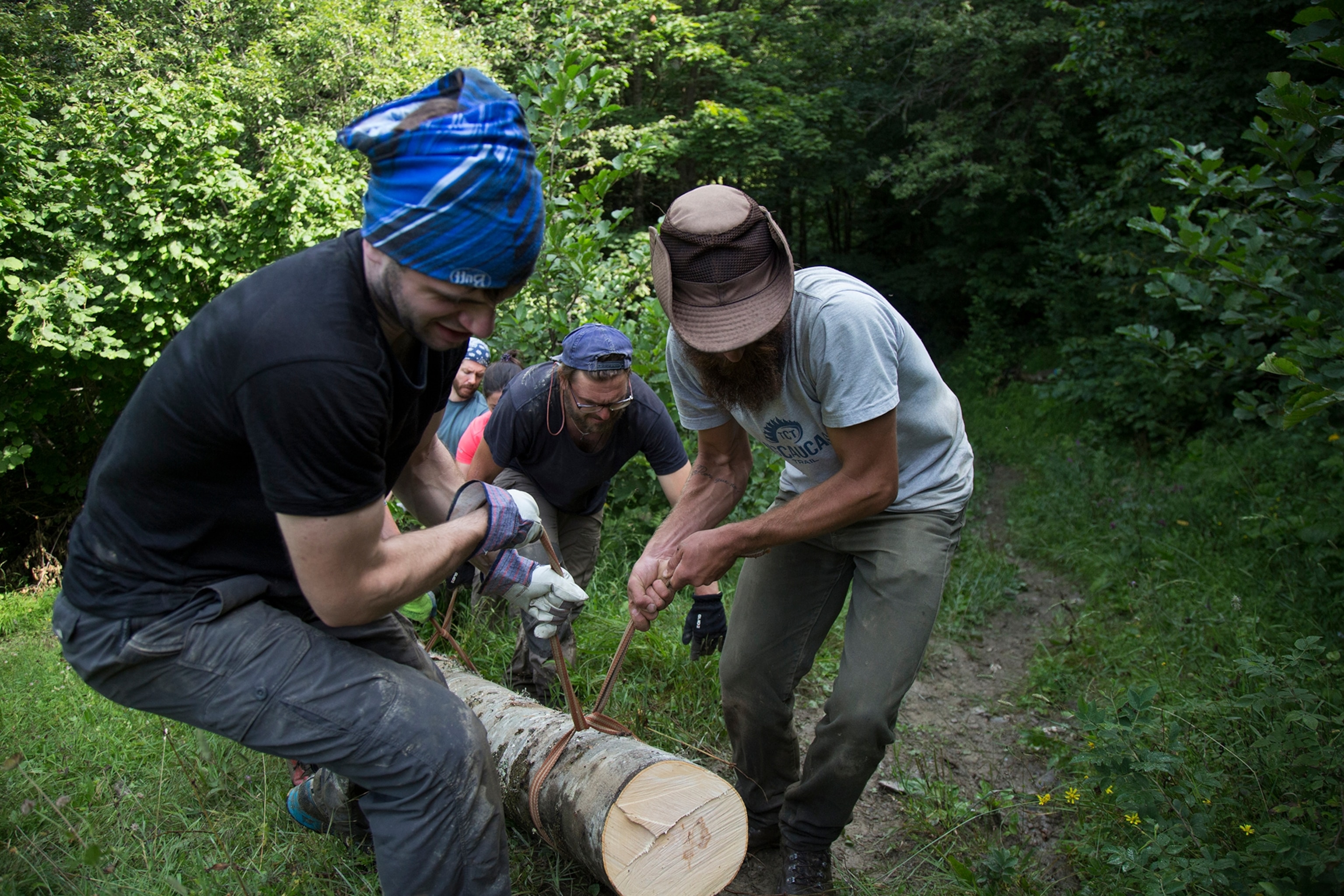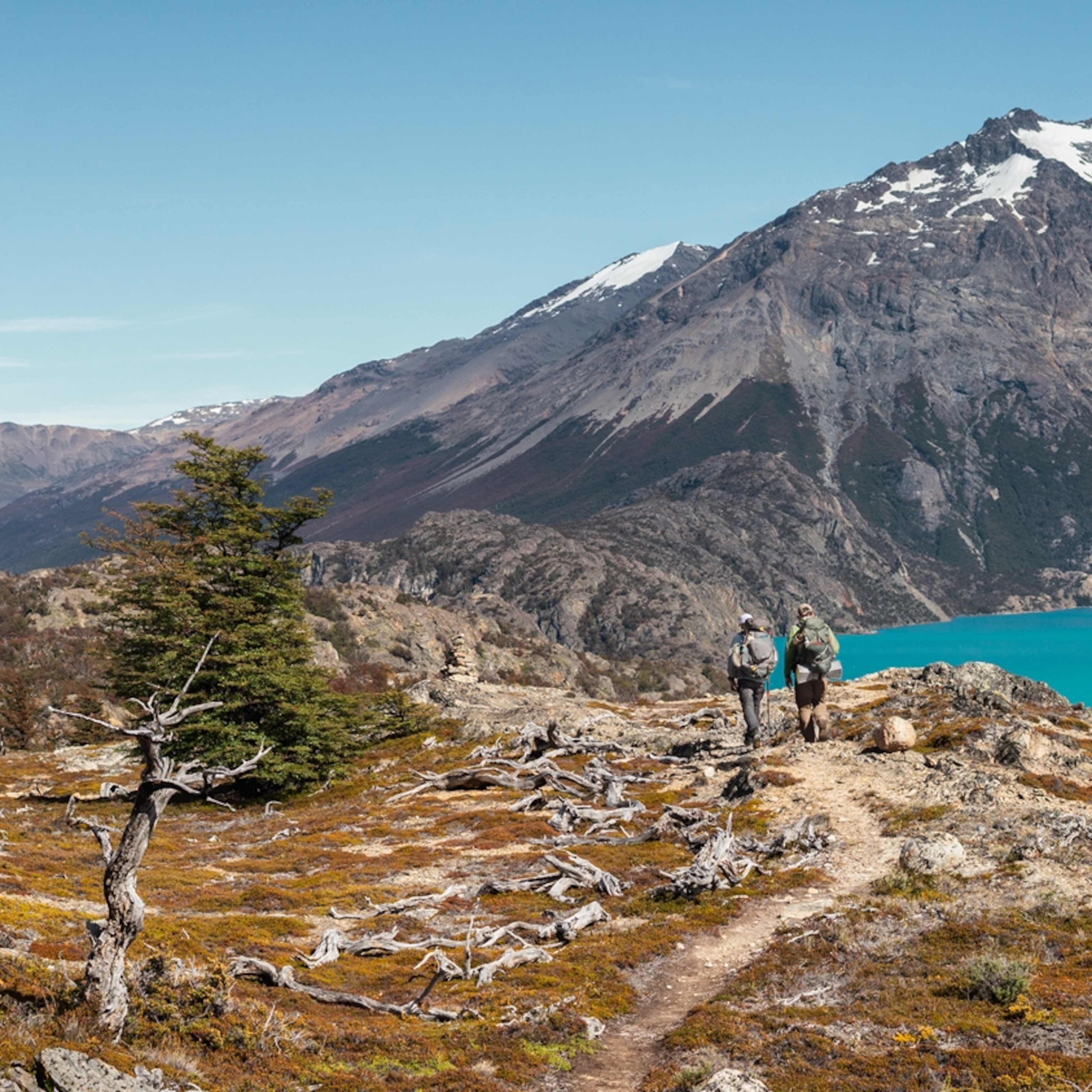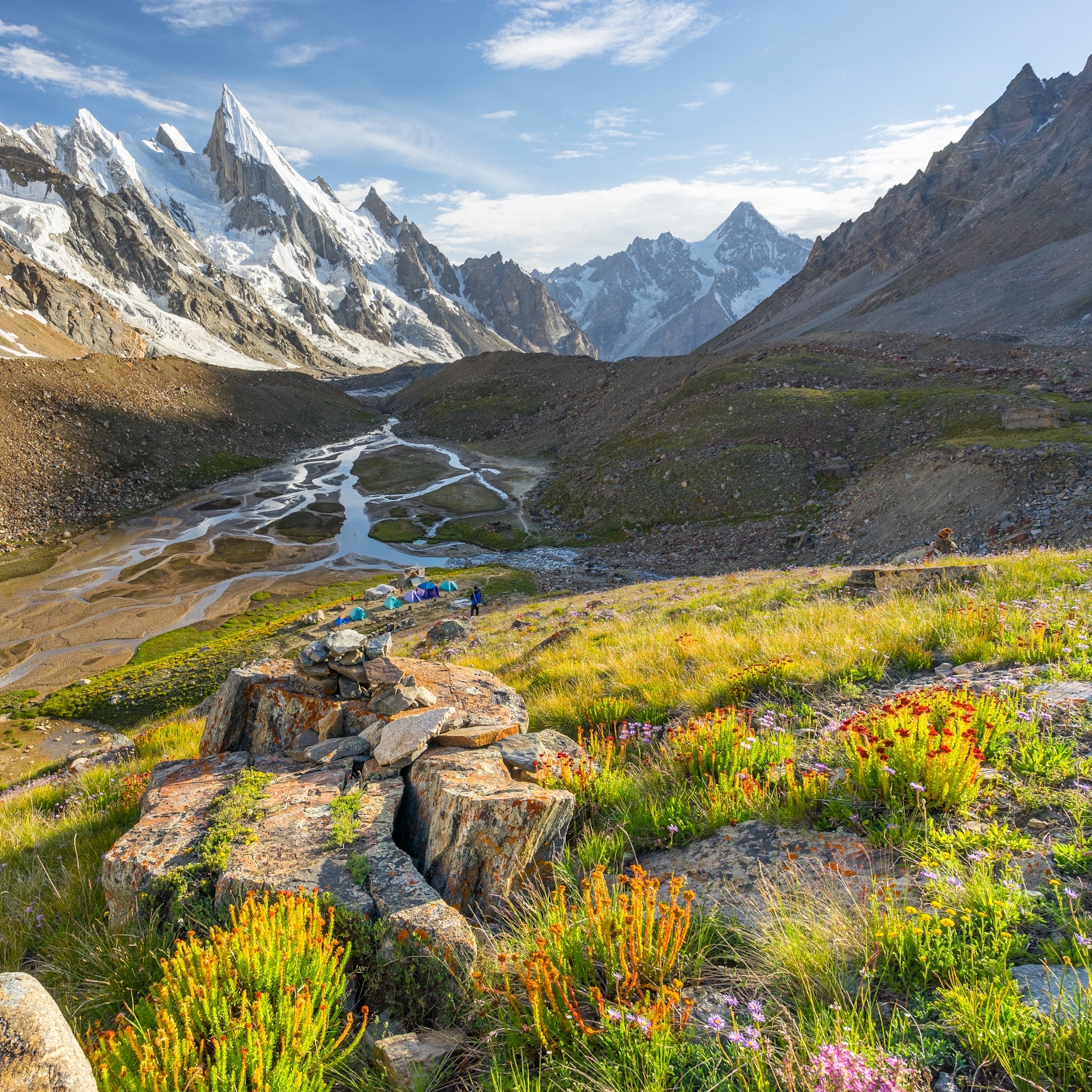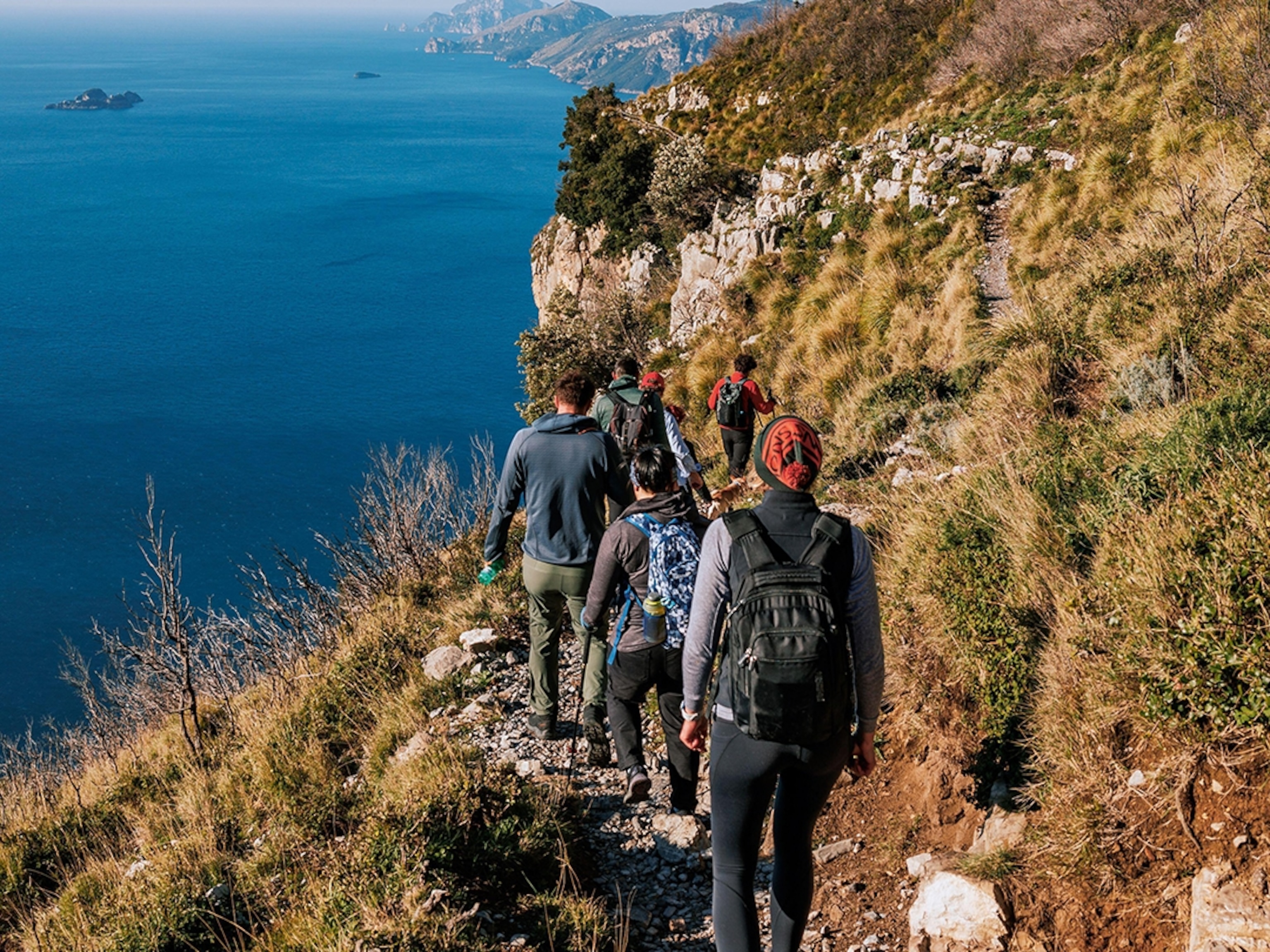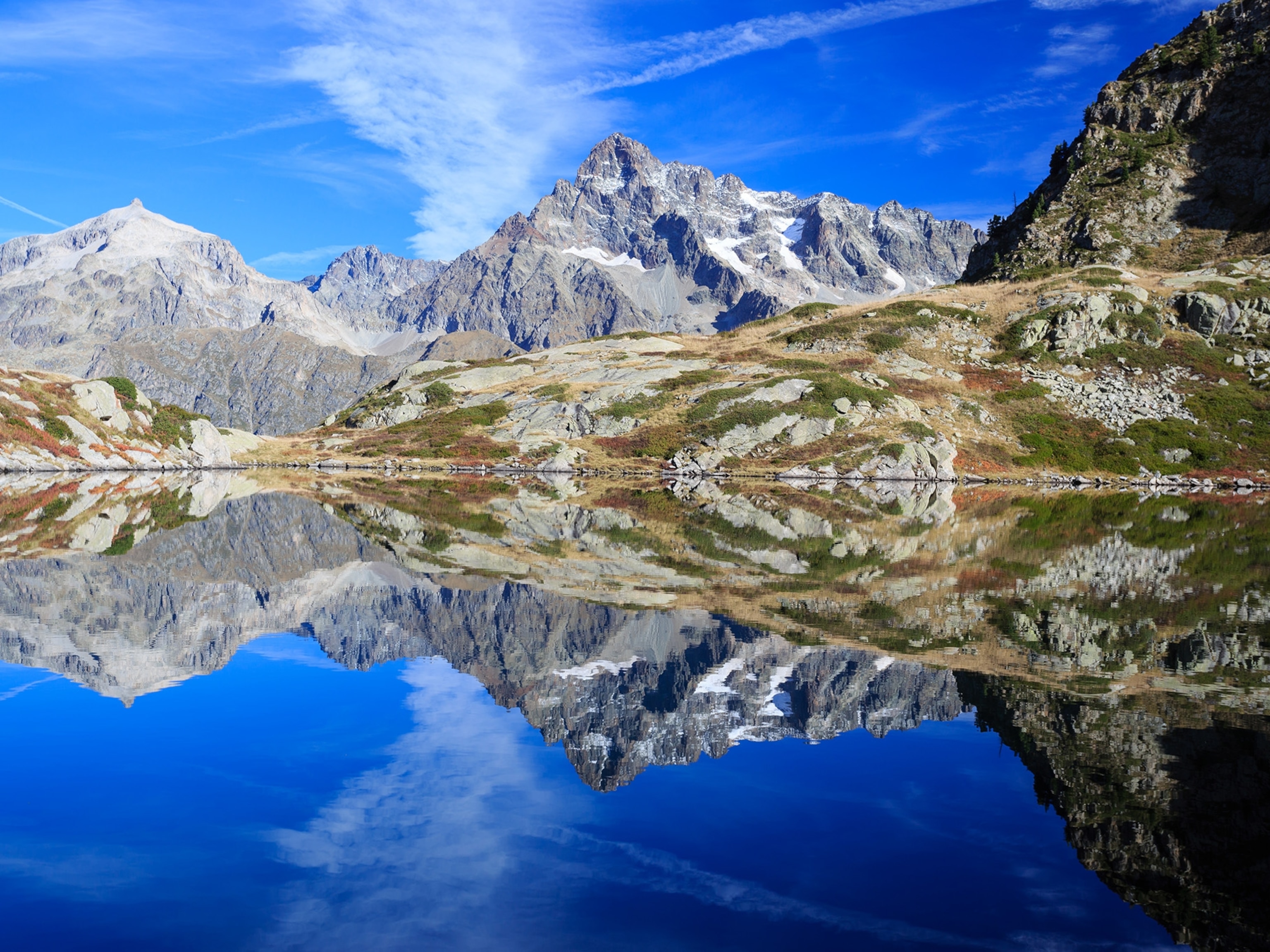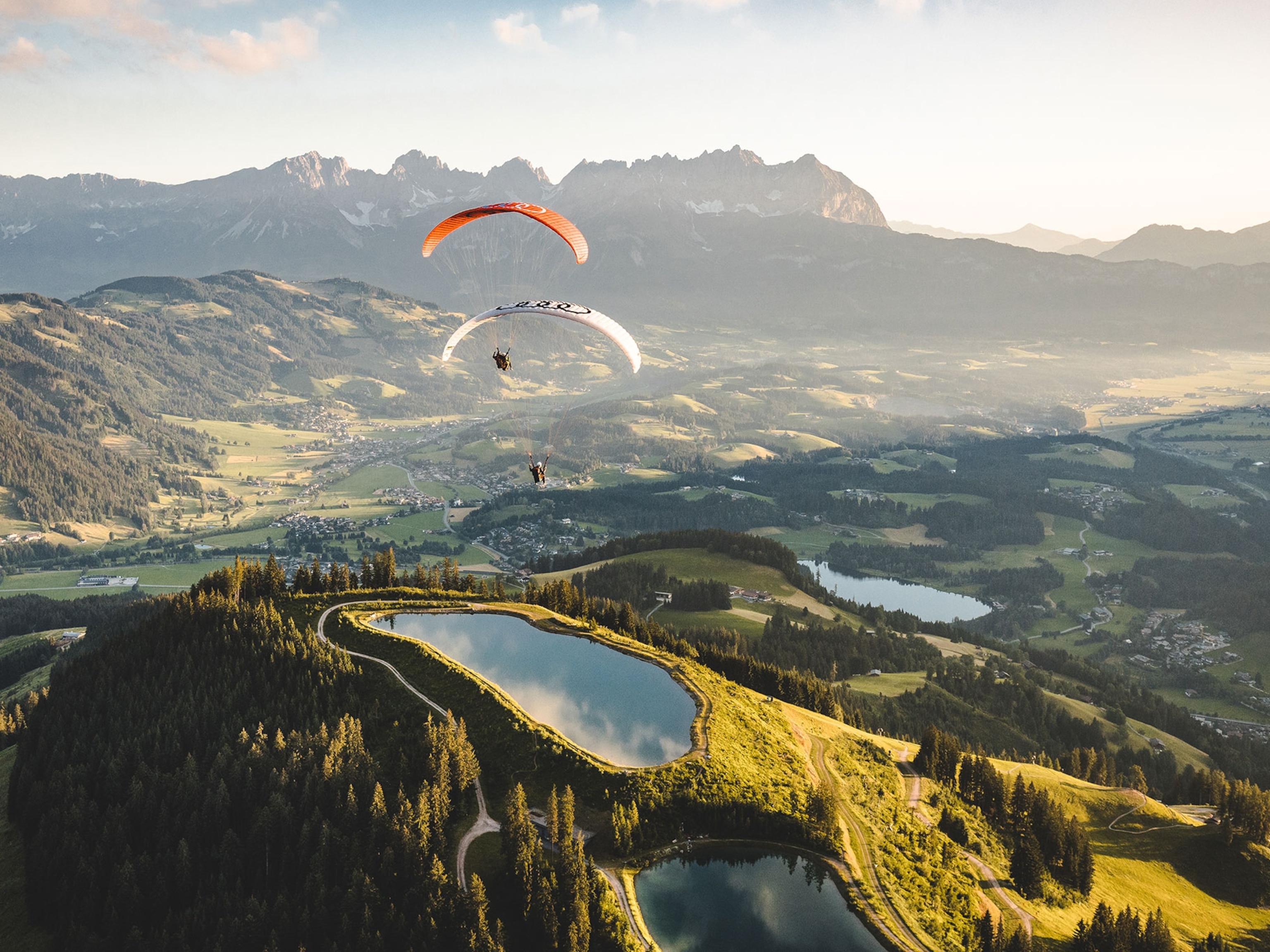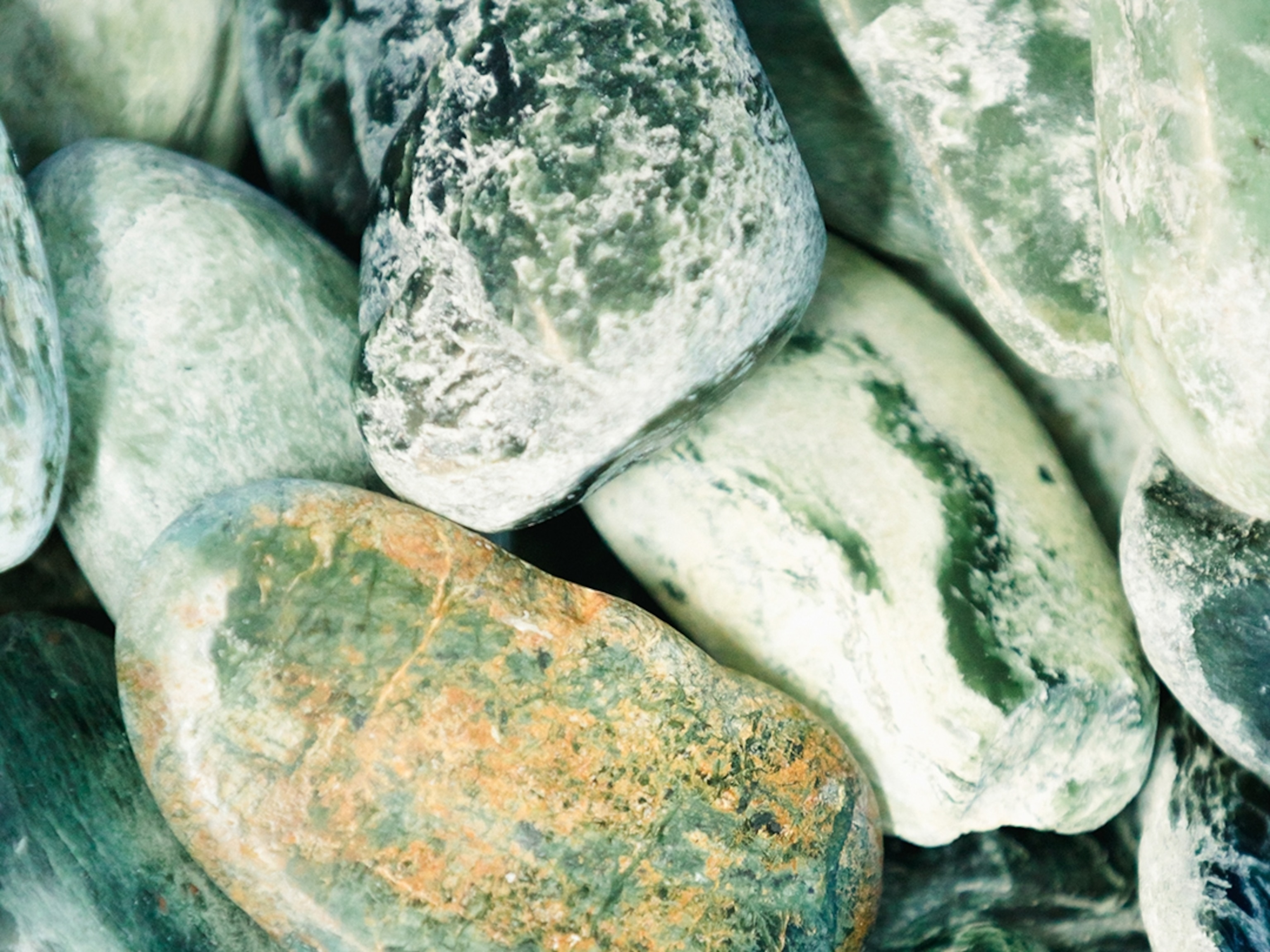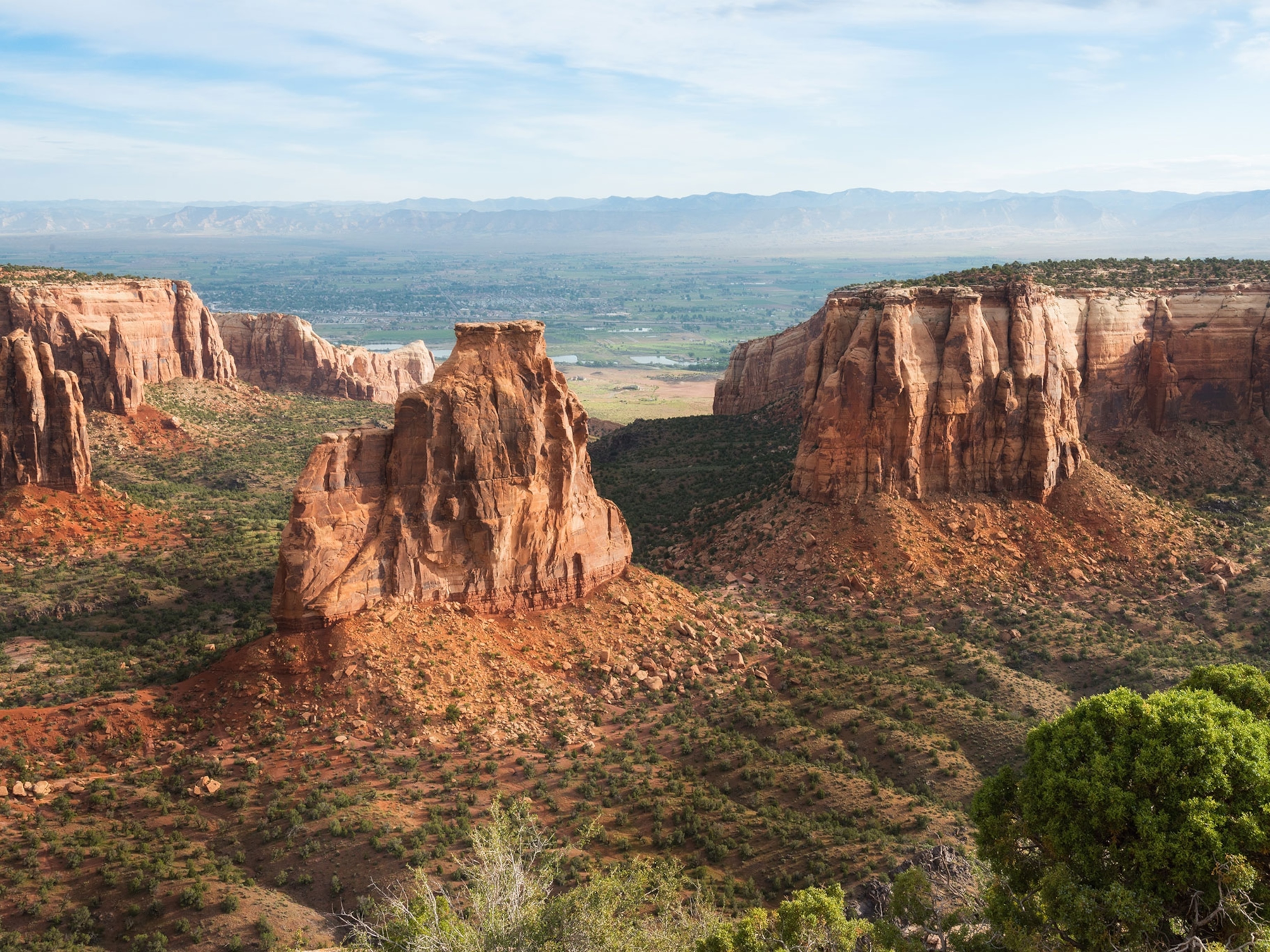This New Mega-Trail Could Open a Mysterious Region to Trekkers
Linking almost a thousand miles of forest and mountains, the trail will offer hikers tough terrain in a little-known corner of the world.
Paul Stephens had hiked and bushwhacked for hours up the old Soviet trail through dense beech and pine forest. He was looking for the pass that connects the Khazreti and Tusheti regions in the Greater Caucasus range, the sawtoothed line of peaks that divides Russia from Georgia, Armenia, and Azerbaijan. Reaching the top, he looked down into the steep canyon below and breathed out in relief. The track continued.
Out here, he knew, paths had a habit of just disappearing. And halfway down, as he scrambled through deep stands of six-foot-tall poisonous hogweed, the “trail” did just that.
Big rockfalls had wiped out long sections of the route, “so I was crossing these really sketchy landslides,” he said. Soon, the loose stone got too dangerous to traverse and he knew he would be forced into crossing the rushing mountain river at the bottom of the gorge. He was alone, with no support, in a remote area. He stepped off a boulder and plunged into the cold, rough water. “The river kept getting deeper and deeper and more and more difficult to cross, and I was really unsure that I was going to be able to make it out of the canyon,” he said.
Those were the kinds of epic physical and mental challenges he and a small American and British team have taken on to scout and build the Transcaucasian Trail (TCT), a 932-mile, long-distance trekking route stretching from the Black Sea in the west to the Caspian Sea in the east. The trail is planned to pass under gorgeous 16,400-foot peaks capped with snow and through a stunning high-altitude UNESCO World Heritage site. The path will traverse ancient villages where hospitality and wine are the currency, and cross crystal blue mountain streams on handmade bridges and ancient Byzantine trading trails worn deep into the fern-covered floors of old-growth forests.
“You have incredibly steep terrain. You have a lot of rivers, and a lot of dense forests that are really difficult to navigate through,” Stephens said. The very obstacles to building a trail here are what make the region a world-class trekking destination. Though virtually unknown on international lists of top treks, the Caucasus lures a small but growing number of extreme hikers looking for adventure in a mostly uncharted wilderness. Stephens hopes the TCT will bring greater access to a still wild place.
Physical and Political Hurdles
Aside from the trouble posed by the difficult terrain, the Caucasus faces historical, cultural, and political concerns, as well as those in geographical and physical form.
From a hiker’s point of view, one of the biggest problems is that the old Soviet trails in the region are unmaintained, with trail markers faded to nothing in places. “Sometimes we lost our track in the woods,” said Irakli Chakhvashvili, a young Georgian geographer who has helped with some of the scouting and mapping.
He recalled a recent hike up to a well-known glacier above Mestia, a popular tourist town in the mountainous Svaneti province in western Georgia. “The markings are also in bad shape,” he said. “It was marked on the maps, but you shouldn’t trust that.”
What’s more, there are few detailed maps. Many of the trails are overgrown or washed out. Cattle crisscross the trail, creating confusing paths through dense forest. The local government’s reaction has ranged from apathetic to worse. And the terrain, as Stephens and his American teammates Jeff Haack, Eric Barrett, and Austin Cowley know firsthand, is mostly unexplored. As if that were not enough, the trail will have to eventually pass through Abkhazia and South Ossetia, two regions that fought violent wars with Georgia and have now broken away from the republic.
“Building a trail across the Caucasus, you run into a lot of geopolitical challenges,” Stephens said. But the trail gets to the heart of the issue. He believes this delicate thread woven through the mountains will not only draw hikers, but will also bring local people together in commerce and planning. “I don’t want to overstate what building a trail can do,” he said. If the trail “has the goal of people working together on a project that connects—literally connects—different communities, then I would hope that one of the eventual long-term side effects of that would be people understanding each other better.”
But for Stephens and his volunteers, the problem was not geopolitics. It was logs and dirt. The job that day was to collect half a ton of stone and drag nearly half a ton of logs up the mountainside to build a turnpike—a big box filled with crushed rock that would raise the trail out of a boggy section. But first they had to clear fresh piles of trail soil from a meadow set to be mown for hay.
“Having the local people on board is absolutely essential. We wanted to go back and make sure we got rid of those piles of dirt, and make sure that he was able to cut the hay,” Stephens said, as trail designer Jonathan Baxter’s chain saw roared to life in the wood below.
A couple valleys away, Valery Vipliani sat on the balcony of his house overlooking the small village of Kichhuldashi. He is a supporter of the trail. “I pray to God it will open soon,” he said. Below, his young grandsons played in the kitchen garden next to the stub of an ancient tower. Strongholds like this one are what the region is famous for. Built in the Middle Ages, they protected villagers from invading armies and from each other in times of war, but they have not protected rural livelihoods from an international economy. “Here we have homemade bread, meat, and cheese,” said the gregarious 74-year-old farmer, who still hunts bear and makes his own wooden skis. “Tourists will come to camp near my house and they will want for nothing.”
Local Interests
Vipliani’s house was an hour-and-a-half hike up a steep jeep track through pine forest. At the top, the trail turned on its magic. A weathered picket fence ran in an uneven line down the edge of a field brimming with bright wildflowers. The hum of bees filled the air. In the distance, Vipliani’s ramshackle house rose up. In his cool kitchen there was a jug of cold well water, homemade sulguni (a salty new cheese), fresh bread, pots of savory bean stew, and a few small glasses of cha cha, a powerful homemade spirit. From his balcony, the whole valley opened up below, with peaks towering overhead. He already had guest rooms.
- National Geographic Expeditions
Like Vipliani, most locals support the trail. Though the country’s famed generosity means some villagers have not quite understood the idea of making a living off hospitality yet, the team believes once farmers see the benefits of tourism, they will help maintain the path.
But Zaur Chartulani, a local government official, is not convinced. He sees the local trails as his personal fief, since he prints and sells hiking maps. He has threatened to arrest Stephens and the others, though he later shrugged that off as “a joke.” Regardless, Stephens said positive government interest is building in Tbilisi, the capital, and more than $10,000 in donations has poured in on Indiegogo to add to funding from corporate sponsors. Working with British scout Tom Allen and other members of the Transcaucasian Expedition—a parallel effort to map out a north-south route through Armenia, sponsored by Land Rover and the Royal Geographical Society—the team hopes to link up and expand to other regions with four times as many volunteers next summer.
Back at the work site, Baxter finished sawing through the thick log. Trail leader Leah Everist, who had experience working on paths in the United States like Baxter, rounded up the group of volunteers hailing from South Africa, the United Kingdom, the U.S., Germany, Italy, and Austria. Downhill they wrapped straps around the 500-pound log and lined up on either side. They heaved, and the next 20 minutes were all grunts, heavy breathing, and curses as they wrestled it up the mountain to the wet section to build the turnpike. But first they had to bring up the other log. Then collect more stone. Then crush it with sledgehammers.
But the scenery was out of this world. “It’s so many different landscapes, cultures, and languages all crammed into this one little space, and to be able to hike across that would just be incredible, and I think would attract people from around the world,” said Stephens, smudged with dirt and huffing with the others. The team this year is focused on completing pilot projects like the turnpike to show villagers and international donors, but members are already planning next year.
“The Transcaucasian Trail is an idea at this point,” Stephens said, “but we’re starting to make it into a reality.”
